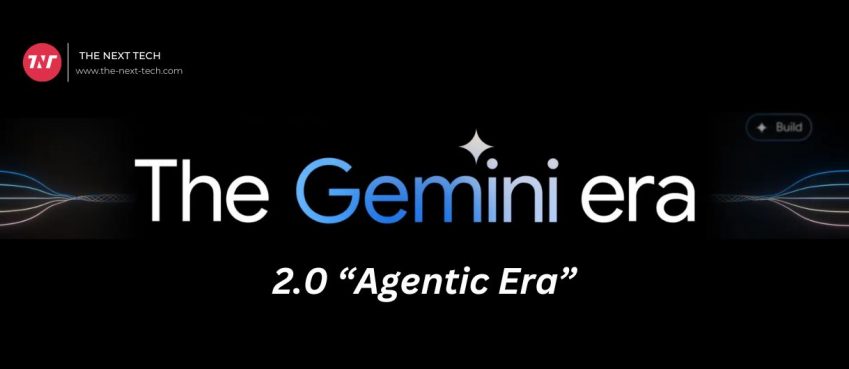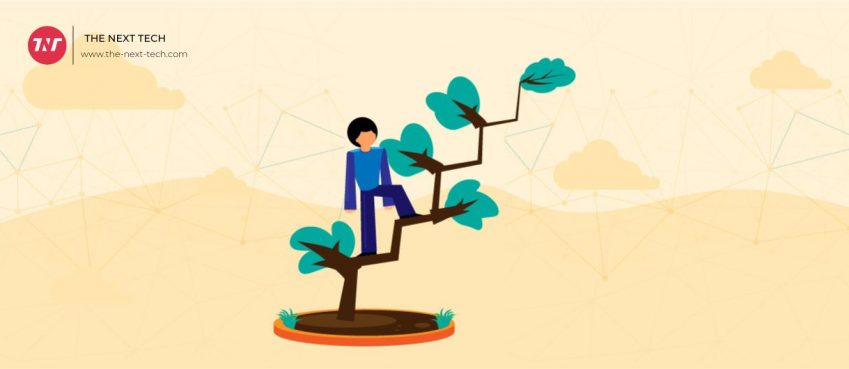
IoT in Media and Entertainment industries, when combined with cloud platforms and big data analysis, provides a significant boost in the utilization of their machine and human resources.
IoT (Internet of things), refers to an ecosystem of connected smart devices, environmental sensors, and other tools that track assets across different locations.
Asset management solutions without IoT are subject to manual data collection errors and delays. It may also be hindered by issues such as poor maintenance, under-utilization, and reporting.
This is due to insufficient data, poor asset utilization, theft, and a lack of awareness about real-time consumer demands. This allows for personalized content consumption and predicts overall media and entertainment consumption.
IoT’s role in media and entertainment
By analyzing multiple aspects of consumer data, the Media and Entertainment Industry is now better equipped to make informed decisions. These data include information such as age, gender, location, time of day, and parallel activities related to consumption.
They can then create more detailed customer profiles which enable them to target ads and personalize their content accordingly, thereby ensuring higher levels of satisfaction.
IoT in entertainment and media bridges the digital and physical worlds. It enables Asset Management through four layers.
Also read: 14 Best Webinar Software Tools in 2021 (Ultimate Guide for Free)
1. Data acquisition –
- Sensors detect and measure parameters like light, sound, temperature humidity, pressure, biometrics as well as proximity, acceleration, speed, and GPS.
- Smart devices respond to the sensor’s input, or capture it by themselves – smartphones and wearables as well as smart TVs, gaming consoles, and home automation devices.
2. Data consolidation
Gateways consolidate and store data from smart devices and sensors, and then transfer it to cloud platforms with greater bandwidth.
They can communicate with multiple protocols, including cellular, Bluetooth, and wi-fi. They can also be used as security layers for the devices.
3. Data hooks
IoT platform collects data and processes from gateways, devices, and other sources. It can also transfer data directly to cloud applications for further processing, analysis, and action. This allows it to connect to cloud platforms or machine learning.
Also read: What Does “FedEx Shipment Exception” Status Mean? What To Do & How To Handle It?
4. Data visibility
Dashboarding and reporting to help understand and use the insights to forecast future content needs.
IoT applications in entertainment and media
The Media industry has a huge opportunity because of the rapid rise in connected devices. Consumers can choose what and when they want to view it. The content providers get rich insights into consumers’ preferences.
These are some of the areas where IoT has made a significant contribution to the industry and overall asset management.
- Immersive content
- Personalized content
- Targeted advertising
- Asset Management
Exclusive streaming experiences with rich content
Let’s look at the entertainment industry in the gaming sector. Augmented reality is made possible by IoT devices like smartphones, tablets, and portable gaming consoles.
This allows for immersive entertainment at its best. AR combines real-world elements and the virtual world, superimposing the virtual onto the real.
Pokemon GO is a classic example of an early demonstration of IoT/AR’s power. Pokemon GO is a game that combines the real world with maps and smartphones.
It also features fictional characters from around the world. All ages were excited and ran around trying to find Pokemon characters. This happened in 2016.
Also read: Top 10 Marketplace For Selling Digital Products
Immersive entertainment is now possible.
Many big brands are creating an entire ecosystem around AR and Virtual Reality (VR) and IoT entertainment. Facebook’s AR Glasses and Microsoft’s Kinect motion-sensing accessory for XBOX 360 are just a few of the many options.
Amazon AR player is also available. AR Emojis can be created using a smartphone’s camera from Snapchat, Disney, or other sources.
Disney has developed an AR and IoT combination that will track and notify guests about delays and provide them with useful information. They can also tell guests where the entertainment is located in the park, which will provide information about who it is. The future could see Disney develop smart devices that allow AR gaming experiences in the parks.
Smart TVs are back in the mainstream TV world. OTT providers and OTT platforms have transformed content viewing from one-time viewing to binge-watching an entire series of shows, to watching it on a specific day.
Chrome casting, another feature that allows you to stream uninterruptedly from any device, including your phone and TV, is another.
Future streaming will offer unique experiences through immersive live events that use IoT devices, VR headsets, and AR glasses to large segments of the population.
Also read: Explained: Most Popular Sanrio Characters Across The World + (Fun Facts!)
Personalized content with user persona and viewer data
Content has become largely digital with the rise in smart devices. It could be walking, biking with friends, exercising, or driving back to your home.
Based on where you are, the music you listen to may provide you with the party, upbeat or soothing music. The data from social media, smartphones, tablets, and wearable devices can give you a complete picture of your family, including their preferences, needs, friend circle, and other information.
Netflix already has multiple user profiles that allow them to interact with families and not just individuals. They can use AI to determine what content you want in the future and which content category you belong to based on your viewing habits, ratings, and other data. Content is customized to an individual’s level using viewer data and personas.
Telepathy, a social streaming service that Netflix created, uses the Facebook gaming platform to bring together friends and stream movies. Each user can log in using their Facebook account and chat. Since group activities were impossible during the pandemic, this was a huge success.
These social data can be used by Netflix, Disney, or other companies to further study group dynamics in content and advertising.
Targeted advertising with targeted campaigns
Televisions of the past would show advertisements to anyone, without knowing if they could reach their target audience. It was impossible to filter it out from those who were not interested.
Today, thanks to digitally accessible content and OTT media, Media and Entertainment companies can track consumers across all devices.
Additional information can be obtained by using devices such as smartphones, tablets, and wearables to consume content. These include their location, time of day, and whether they are exercising or moving. We can also paint a picture from the connected devices within a house, which allows us to target ads based on specific needs.
We can now use the data collected through wearables or other smart devices to get metrics such as how many people saw an ad and how many of them converted. These user data can be used to create highly targeted campaigns and offer high-impact revenue generation.
Also read: Top 10 IT Companies in The World | Largest IT Services
IoT Asset Management Solutions
Asset Management generally consists of:
1. Tracking of moving assets: In the case of the Media and Entertainment sector, it could be electronic bracelets that customers use in an adventure park to enhance their experience.
2. Monitoring: Monitoring an asset’s health, such as a setup box, to check if it is connected to wi-fi and whether there are any technical errors, and tracking its usage.
3. Workflow Automation: Use a voice-activated assistant for switching on/off assets, decreasing or increasing the volume of a TV or music system, or casting what you are viewing on your phone to a TV.
4. Maintenance: Based on asset tracking and monitoring, predictive maintenance is possible. You can, for example, use IoT devices like a Home assistant to detect faults in an asset and notify the customer about maintenance.
5. Security: The company’s digital assets must be protected with authentication and role-based authorization for access, collaboration, and the addition of content. Assets must be secured at the consumer’s end to prevent hackers from stealing sensitive information.
Entertainment companies can offer the best customer service by using IoT, Mobile Chatbot, Artificial Intelligence, (AI), and Mobile. This is evident at the customer level.
A setup box, for example, is included with every TV connection. In the past, the provider had to send someone to set it all up. Today, customers can do it themselves by using a chatbot or their app. The setup box can also check for network connectivity and notify viewers.
Also read: UpTrends.ai - Is It Shut Down? Rumors, Use Cases & FAQs
Improve accessibility and customer experience
The provider can also send messages to customers if there’s a technical problem or a bill that hasn’t been paid. These messages can be viewed on the TV’s home screen or the customer’s phone or mobile app. The chatbot can be used to diagnose technical issues.
This allows customer service to save valuable time and can focus on other important issues. Because the smart devices can be connected, it is possible to have a smaller and more skilled support team. This allows for minimal human intervention.
Enabling next-gen devices with IoT in media and entertainment
Digital Home Service (DHS), a cloud-based Oracle solution, is for pay-TV operators that are service-intensive and set-top boxes. It combines Oracle IoT and mobile, chatbots, AI, and Oracle cloud platform with modern digital client management.
Deliver the next generation in digital home services capabilities. This allows for a reduction in effort and an increase in efficiency among customer service and field service teams.
IoT is at the heart of all smart devices, including smart TVs and gaming consoles as well as music systems and air conditioning. They can interact with voice-activated Smart Home devices like Roomie Remote, Google Assistant, Alexa, and Google Assistant. One assistant can manage all of our smart devices, including switching on/off and searching for content.
Also read: How To Fix “Apple Watch Not Updating” Issue + 5 Troubleshooting Tips To Try!
Future of connected devices and IoT for media and entertainment
Content security is another important aspect. Everyone is surrounded by data and devices, even children. There are many options to allow parental control on platforms and devices.
This allows children to see only age-appropriate content. Every IoT asset and device collects data. This could be your fridge, security camera, or Amazon Echo. These devices can pose a threat to your privacy and security against cybercriminals.
They could hack into your devices and monitor your activities. They may also steal data, both digital and physical. This depends on how well you’ve secured your home. It is crucial to secure your home’s IoT environment. Slowly, biometric security is being replaced by multiple passwords and is not very secure.
IoT Asset Management Solutions offer endless opportunities to elevate Media and Entertainment to new heights. It is a powerful predictive monitoring tool that assists with asset maintenance and provides deep insight into the end-user.
There are always newer and more advanced IoT devices on the market. Media and Entertainment houses would be wise to start investing in an intelligent IoT framework.
Top 10 News
-
01
10 Exciting iPhone 16 Features You Can Try Right Now
Tuesday November 19, 2024
-
02
10 Best Anatomy Apps For Physiologist Beginners
Tuesday November 12, 2024
-
03
Top 10 Websites And Apps Like Thumbtack
Tuesday November 5, 2024
-
04
Top 10 Sites Like Omegle That Offer Random Video Chat
Monday October 21, 2024
-
05
Entrepreneurial Ideas To Make 5K In A Month (10 Realistic Wa...
Monday October 7, 2024
-
06
[10 Best] Cash Advance Apps Like Moneylion And Dave (No Cred...
Friday September 20, 2024
-
07
Top 10 Richest Person In The World
Tuesday August 27, 2024
-
08
Top 10 Unicorn Startups In The World (2024-25)
Monday August 26, 2024
-
09
Top 10 IT Companies In The World By Market Cap
Thursday August 22, 2024
-
10
[10 New] Best OnionPlay Alternatives To Stream TV Shows And ...
Tuesday June 11, 2024







